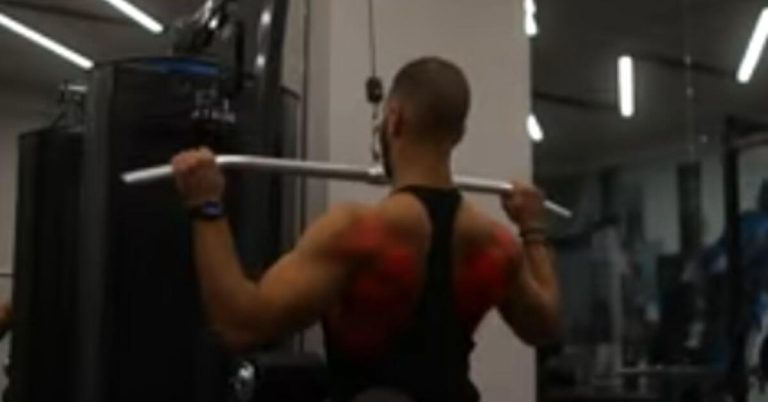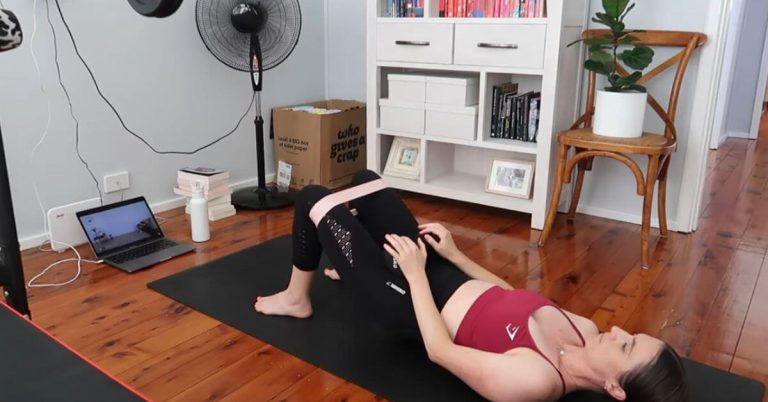Why is One Lat Bigger Than the Other? Uncovering the Imbalance
Last Updated on December 6, 2023 by Justin Harris
Why is One Lat Bigger Than the Other: One lat may be bigger than the other due to muscle imbalances, which can lead to injury or poor movement mechanics. Muscles can become imbalanced from factors such as scoliosis or kyphosis, causing tightness in one side of the latissimus dorsi muscle.

To address this issue, one can focus on exercises that target the weaker side and incorporate unilateral work to even out muscle size. Proper posture and exercise technique are also important in preventing muscle imbalances. Addressing these factors can help correct the size difference between the lats and promote overall muscle symmetry.
Understanding Lat Muscle Imbalances
Understanding lat muscle imbalances can help explain why one lat is bigger than the other. Muscle imbalances can lead to injury, joint pain, and poor posture. If you lift weights, these imbalances become even more significant, making it important to address and correct them.
| Common causes of lat muscle imbalances | |||
| Muscle imbalances are common and can be caused by various factors. In the gym, improper exercise form, overuse of certain muscles, or favoring one side of the body can lead to imbalances in the lats. Scoliosis, a condition characterized by an abnormal curvature of the spine, can also impact the lats. If you have scoliosis, the muscles on one side of the body may be tighter than the other, resulting in an imbalance. Similarly, kyphosis, a rounded upper back, can affect the front part of the lats causing tightness. It’s important to address these imbalances as they can lead to injury, joint pain, and poor movement mechanics. |
The Importance Of Balance And Symmetry
The role of balance and symmetry in muscle development is crucial for avoiding injuries and maintaining good posture. Muscle imbalances, such as having one lat bigger than the other, can lead to joint pain, poor movement mechanics, and postural issues. This becomes even more problematic when lifting heavy weights in the gym. A short latissimus dorsi muscle, which tends to keep the shoulder girdle down and forward, can contribute to this imbalance.
To address this issue, it is important to focus on exercises that promote balance and symmetry in the lats. Some recommended exercises include one-arm cable rows, horizontal and incline rows, and progressively heavier one-arm dumbbell lawnmower starts. These exercises help strengthen the weaker lat and bring it closer in size to the larger one. Additionally, maintaining good posture throughout your workouts and daily activities can also aid in preventing injuries and promoting overall balance and symmetry in the lats.
How To Address Varying Lat Sizes
When it comes to addressing varying lat sizes, there are specific exercises that can help correct muscle imbalances. One-arm cable rows, horizontal and incline one-arm lawnmower starts, and unilateral work for size imbalances are effective techniques to target and balance the lat muscles.
One-arm cable rows: This exercise involves pulling a cable handle towards your side using only one arm, engaging the lat muscles on that side.
Horizontal and incline one-arm lawnmower starts: These movements mimic the motion of starting a lawnmower, focusing on the activation and development of the lat muscles on one side at a time.
Unilateral work for size imbalances: Incorporating exercises that specifically target the larger lat muscle can help balance the overall size. By incorporating these exercises into your workout routine, you can address varying lat sizes and work towards achieving a more balanced physique.
Tips For Achieving Symmetrical Lats
The asymmetry in lat muscle size is a common issue that many individuals face. When it comes to achieving symmetrical lats, proper technique and form during lat exercises are of utmost importance. Ensuring a strong mind-muscle connection is also crucial for optimal results.
When performing lat exercises, it is essential to focus on the contraction of the targeted muscles. This can be achieved by emphasizing the movement and feeling the muscles working throughout the exercise. Mindfully engaging the lats will help in achieving a balanced development.
In addition to the mind-muscle connection, maintaining proper form during lat exercises is vital. This includes maintaining a neutral spine, avoiding excessive swinging or jerking movements, and using a controlled range of motion. Consistency and patience are key when working towards symmetrical lats.
Concluding Thoughts
When it comes to body asymmetry, it is normal for one lat to be bigger than the other. Muscle imbalances are common and may not be a big issue for most people. However, they can cause injury, joint pain, poor movement mechanics, and posture problems. This becomes an even bigger issue when lifting heavy weights in the gym.
If you have scoliosis or kyphosis, one side of your latissimus dorsi muscle may be tighter than the other. But, it is important to accept this natural asymmetry while striving for balance. You can work on balancing your lats through exercises like one-arm cable rowing, horizontal and incline rows, and one-arm lawnmower starts. Additionally, maintaining good posture and incorporating exercises like lat pulldowns, dumbbell rows, pullups, and shoulder extensions can help in overall lat development and muscle symmetry.
Conclusion
Having one lat bigger than the other is a common natural asymmetry. It can be due to factors such as scoliosis, kyphosis, or muscle imbalances. However, it is possible to improve the symmetry through exercises like one-arm cable rowing, dumbbell rows, and lat pulldowns.
It’s important to focus on maintaining good posture and using proper exercise techniques to prevent injuries. Emphasizing unilateral work can also help address any size imbalances. Remember, everyone’s body is unique, and small differences in muscle size are normal.
Read Also,
- Best Treadmills Under 2000
- Best Treadmill Under 200
- Best Treadmill Under 1500
- Best Stationary Bike Under 200
- Best Treadmill for 500 Pounds
- Best Exercise Bikes Under 300
- Best Exercise Bike for Short Person
- Best Treadmills Under 1500
- Best Elliptical Under 600
- Best Elliptical Machine Under 1000
- Elliptical Machine for Short Person






